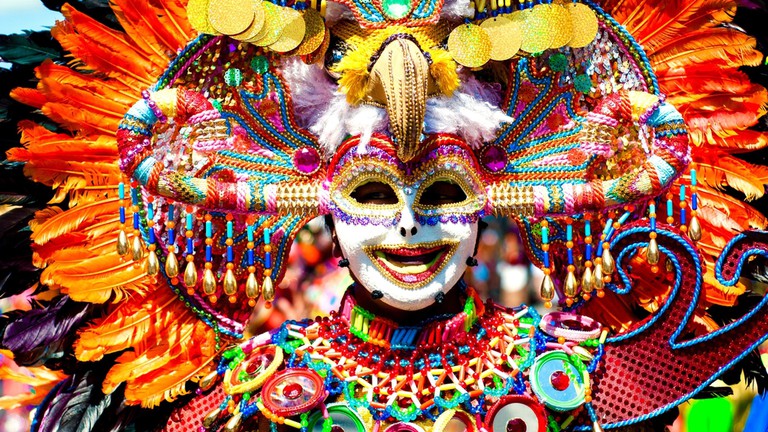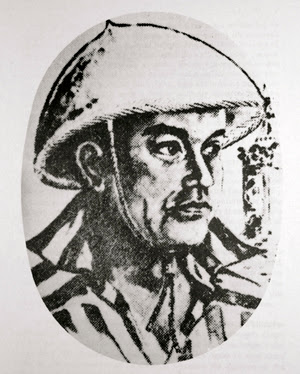Kalubano Society
A Tigyagi Noblewoman in her festive attire
Races
In the lands of Kaluban, there are three dominating races: The Mayanmang, the Tigyagi, and the Bukatlag.
Mayanmang
The Mayanmang lives in the northwest archipelagos of Kaluban. They can be recognized by their fair skin, narrow eyes, and western-inspired attire. They are a merchant-centric race, prioritizing trade with neighboring factions and foreigners more than military power. They are known for wearing gold and jewelry as accessories to showcase their wealth to their neighbors. They were also the first Kabulano race to establish connections with different countries. Because of these connections, they became the wealthier and more technologically advanced race compared to the other races. Their culture focuses most on the idea of growth in all its forms; on wealth, on society, and on the individual. The most common trades for these people are scholars, traders, or craftsmen; anything that may lead their barangay to prosperity. To be a Mayanmang is to desire a tomorrow that is better than today.Tigyagi
In the southern areas of the mainland are the Tigyagi. They are known for their culture of beauty and their commitment to wearing a mask at all times. Seldom will they ever take off their masks but when they do, they can be seen to have olive skin, curly hair, and connecting eyebrows. To a Tigyagi, beauty is everything, and it is worth fighting for. They recognize beauty in all things like nature, arts, and even in The Wilderness. They are shown to be the most expressive of their emotions in the most artistic way, through arts, songs, and dance. Despite prioritizing beauty, the Tigyagi are known to show extreme selflessness and humility. They do not like being complimented in a way that elevates them above the others. It is customary to only appreciate the beauty in the craft instead of the individual.Butaklag
The Butaklag resides in the northeast archipelagos of Kaluban. They can be distinguished by the tatoos they have on their dark and brown skin that symbolizes their skill and authority. They take pride in their skills on warfare. A Butaklag warrior possesses the bravery and will to singlehandedly take on multiple enemies at once and emerge victorious. Despite their violent nature, their culture revolves around a code of honor that they must respect and maintain if they are to be a proper warrior. they believe that an honest man must be treated with the same respect as a datu, and a datu must be treated with the same respect as an honest man. A Butaklag has the strength of iron, but a heart of gold.
Barangay
A Barangay or town is the smallest sociopolitical unit in the lands of Kaluban. It is a community composed of different citizens and families and is governed by a House. A Barangay depends on the house to protect its citizens from incoming threats.Social Hierarchy
In the lands of Kaluban, there is a caste system that separates the people into different groups. Each Race and Faction has a different way of handling its people but many aspects remain the same.House
A House is a governing body that rules over a Barangay. They are responsible for maintaining order in their specific Barangays and providing protection for incoming attacks. Depending on the faction, a house can be an individual, a family, or a council. Different factions also have different ways of referring to the members of the House such as Datu, Rajah, Hari/Reyna, or Ginoo/Ginang. It is possible for a House to govern more than one Barangay, but that privilege is reserved only for the higher houses of the faction.Citizens
Citizens are the average members of a Barangay. These people are given the privilege to own property in their Barangay and may work to earn wealth. However, there are special types of citizens that are given different privileges and responsibilities. Depending on the faction and race, these special citizens are given specific roles for the Barangay: Maharlikas are warrior classes that are given higher combat training so that they may serve military work for the House, Timawas are like Maharlikas but are used more on covert operations on rival factions, Mambabarangs are shamans that help take care of the citizen's medical problems, and many more.Alipin
Alipin are the lower classes of the Barangay. They are people who committed crimes that are not punishable by death or were individuals who were born from Alipin parents. Their purpose resembles that of slaves, they are given hard labor or jobs no one wants to do. They don't have the privilege to own property or to travel away from their barangays, some are not even allowed to walk outside their masters' homes. But unlike slaves, there is a system in every house that allows Alipins to be free from their Alipinhood. Though the system that allows them to be released varies from faction to faction.Factions
Throughout the lands of Kaluban reigns different factions. A faction is a large political entity composed of multiple houses that have agreed on uniting under a single banner. A single High House has the authority to rule over other houses as the supreme leader of the faction. Each faction has their own system of beliefs, government, and hierarchies that all citizens and Houses must follow. Some factions honor the traditions of their races, but some are known to assimilate the cultures of other races into their own traditions. These shifts in ideologies have been the subject of many faction and House conflicts, especially for Tigyagi factions. Throughout the History of Kaluban, there have been little lasting alliances between factions, even with the same race. Because of the spread of the legend of Sinaunang Lupain (The First Kingdom), many faction leaders believe that their faction is the one true descendant of the eldest brother and has the right to rule all of Kaluban.A Mayanmang soldier
Aswang
Amongst the people of Kaluban, there is a different race of creatures, different from the 3 main races. They are often referred to as Aswang, an umbrella term used to refer to people who are in the middle ground of Human and Monster. There are different types of Aswang like the tree-dwelling Kapre, or the more common Tikbalang, a creature in between a horse and a man. It is important to note that there are humanoid monsters as well, but the main difference of a monster and an Aswang is the ability to speak and reason. Different factions and barangays have differing opinions toward these creatures, some consider them to be no different from a monster, some are given the same rights as any regular Kalubano, some are accepted but only as Alipin. Because of this, many Aswangs spend most of their lives in hiding.Combat Culture
Because of the constant threat of monster raids, piracy, and faction wars, the Kalubanos have adopted a Culture of War. Starting at an early age, young Kalubanos are trained to use conventional weapons such as Kalis, Bolos, Spears, and Bows. It is rare to find a Kalubano who has no experience with either of these weapons.More on General Knowledge:
Remove these ads. Join the Worldbuilders Guild












Comments